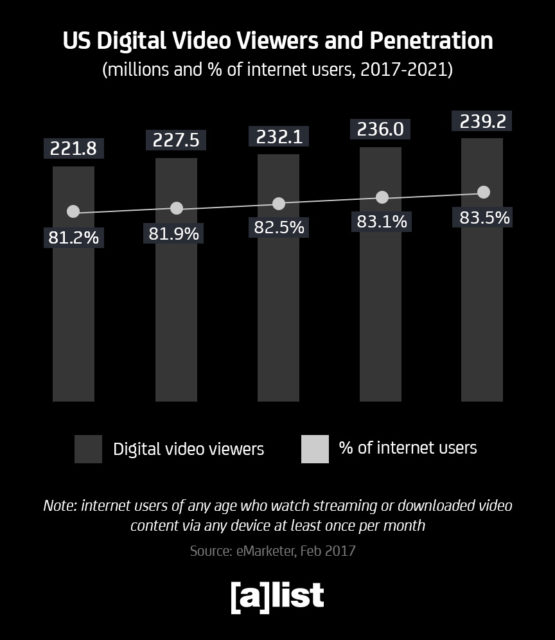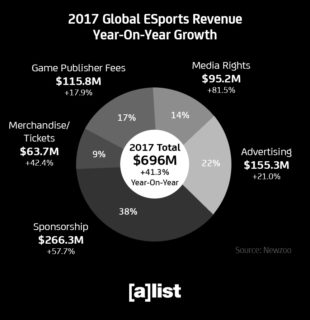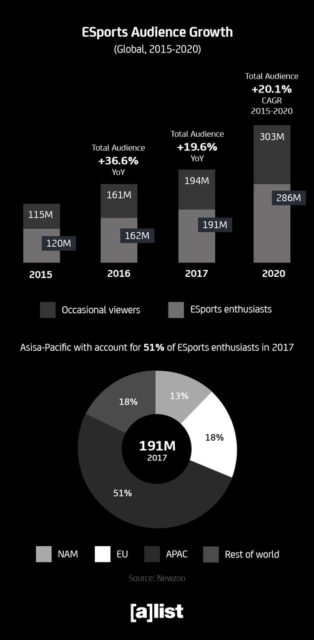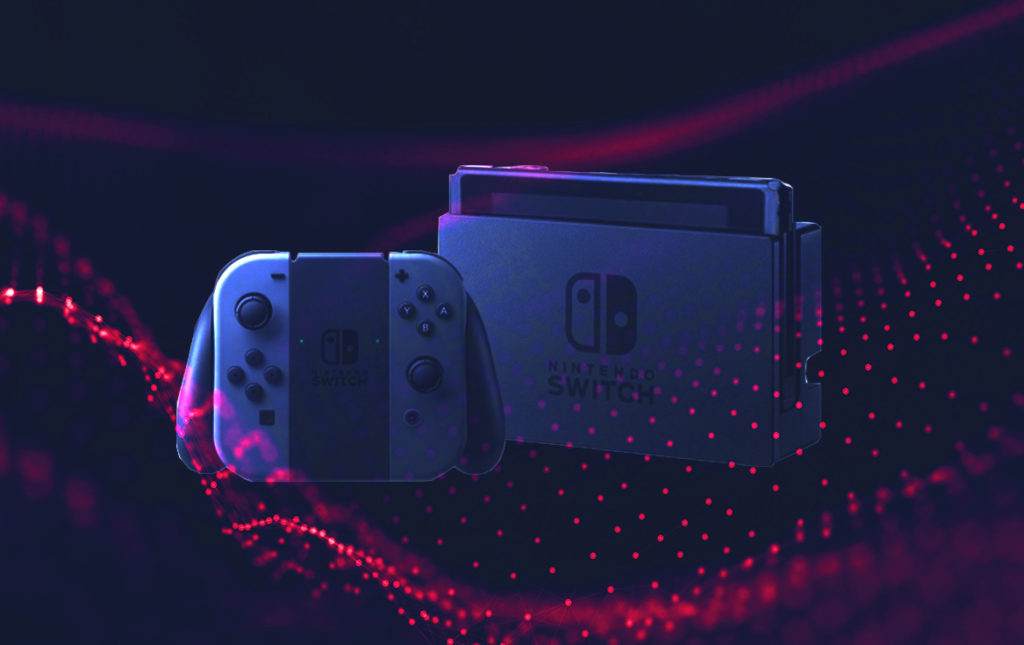This week, video viewership is up, video game sales are down and we examine how different generations view cause marketing.
Press Play
US digital video viewers will grow from 221.8 million to 239.2 million between 2017 and 2021, according to estimates by eMarketer. The penetration rate among internet users will increase from 81.2 percent to 83.5 percent. As the number of US adult digital video viewers grows, eMarketer estimates, the universe of adult pay TV viewers will continue to contract.

Happy Ads
Have you hugged your ad-supported internet today? The ad-supported internet ecosystem contributed about $1.121 trillion to the US economy and more than 10 million jobs across the entire country, according to a new study commissioned by the Interactive Advertising Bureau. The report found that the commercial internet accounts for six percent of the US gross domestic product, and the number of jobs created directly or indirectly by the ad-supported internet doubled from 2012 to 2016.
Speaking of ads, consumers may be more receptive to advertising throughout the day if they’re feeling upbeat. According to The Receptivity of Emotions study by Yahoo, “upbeat” consumers are 30 percent more likely to engage with native video content than in other emotional states, 28 percent more likely to engage with content marketing and 21 percent more likely to engage with direct marketing.
Just ‘Cause
Cause marketing is risky business these days, but many consumers—especially millennials—make an effort to purchase from brands whose causes align with their own. A survey of 1,000 American adults by Toluna revealed that 45 percent of millennial consumers would be willing to spend time researching which causes a brand supports, and 47 percent would be willing to pay more for brands that pass the test. Baby boomers surveyed weren’t overly concerned, with 49 percent stating that they don’t think about causes when making purchases. Gen X respondents consistently walked the line between baby boomers and millennials, with 39 percent willing to research brand causes, but 29 percent agreeing with older generations who don’t think about such things.
Brands have plenty of cause for concern, as new figures by The&Partnership estimate ad fraud to cost brands nearly $16.4 billion this year. The agency calculates that roughly 29 percent of programmatic ad spending in 2016 was wasted on invalid traffic, costing approximately $7.8 billion.
Gaming Growth
The eSports economy will grow 41.3 percent to $696 million in 2017, according to Newzoo. The total market is expected to nearly triple to $1.5 billion by 2020, with the largest portion coming from sponsorships. North America is the largest demographic for eSports revenue, poised to bring in $257 million in 2017 and reaching $607 million by 2020.

The Nintendo Switch is flying off the shelves and every major retailer in the US saw an increase in their web and mobile traffic from Nintendo’s site and from searches, according to analytics firm SimilarWeb. Nintendo’s website sent 1.4 million clicks to Amazon throughout the month leading into the launch of the Switch—more than any other retailer.
GameStop and Toys ‘R’ Us traffic peaked over a 30-day period on the Nintendo Switch’s March 3 launch day, as well. Analyst firm SuperData estimates the Nintendo Switch will sell five million units by the end of 2017.
Ubisoft’s battle game For Honor debuted as the number one digital game in February, according to the latest report by NPD. The video game industry had a battle of its own last month, suffering a decline of 21 percent in spending for software, hardware and accessories for February.
PlayStation 4 was the top-selling hardware system in the month and the PlayStation 4 Slim System 500GB Uncharted 4: A Thief’s End Bundle was February’s top-selling console for the fifth month running.
NPD’s Top 10-Selling Games For February (Across All Platforms) are:
- For Honor
- Resident Evil 7: Biohazard
- Grand Theft Auto V
- NBA 2K17
- Call of Duty: Infinite Warfare
- Tom Clancy’s Rainbow Six: Seige
- Madden NFL 17
- Battlefield 1
- Nioh*
- Overwatch*
*Asterisks indicate that digital sales were not accounted for (or purchases made on Battle.net, in the case of Overwatch).

Getting Suspicious
Consumers in Japan are beginning to trust online media more than traditional outlets, according to a study by Edelman. The company surveyed Japanese internet users in 2012—and again in 2017—learning that trust in search engines and social media have grown in the last five years. Trust in traditional media, however fell from 48 percent in 2012 to 39 percent in 2017.
Meanwhile, 15 percent of Twitter users may not be real, according to the study Online Human-Bot Interactions: Detection, Estimation and Characterization from the University of Southern California and Indiana University. The report also noted that, even given the research parameters, some complex bots still might have been mistaken as human, so the 15 percent figure could be a conservative estimate.
Middle On Top
Mid-roll ads, especially on smartphones, are experiencing high completion rates, according to a new Ooyala fourth quarter 2016 study. Publishers saw a rise in mid-roll impressions on mobile devices, increasing to 48 percent in the fourth quarter from 30 percent in third quarter, the report states. Long-form is also the most popular, making up 47 percent of all mobile plays in the fourth quarter.

